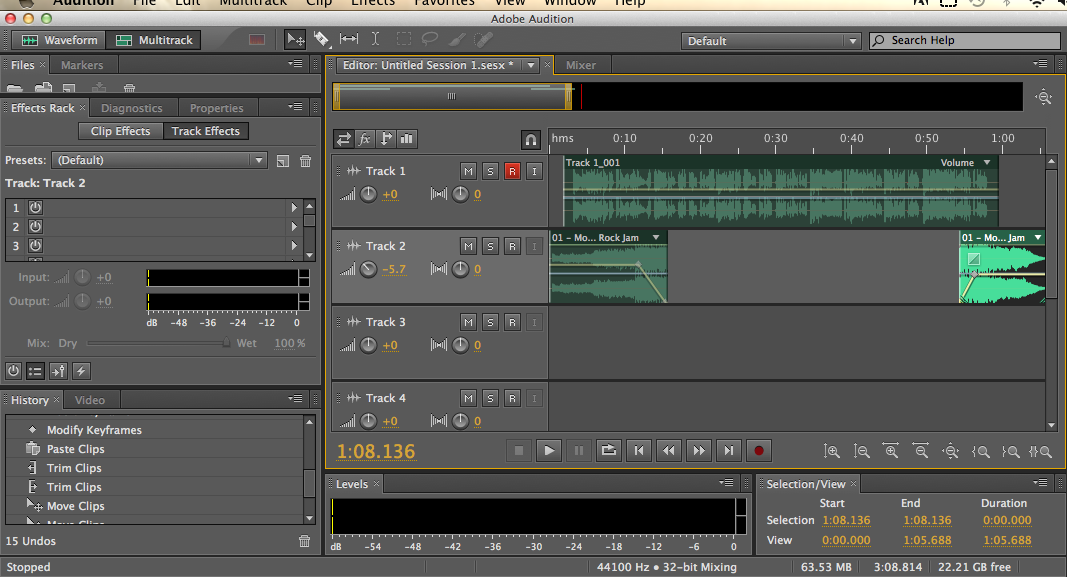
Simple editors only deal in basic uncompressed waveform audio (WAV) and common lossy formats (MP3, AAC). Lastly, support for a wide array of audio files and formats may be important to some users. The ability to manipulate and mix audio into a video file-known as "muxing"-removes the need to render large video files for small audio edits. If you're editing audio for use in a broadcast, adherence to common broadcast standards should make life easier. Some editors even support external effects via plugins. These include compressing tracks to smooth out recordings that vary in volume, using an equalizer to boost or cut particular frequencies, and applying filters that drastically change the sound of your file. Effects are useful for repairing and enhancing your audio too. They also use more system resources than simple destructive waveform editing.Īudio editing isn't just about recording and moving around sound files. You might find these features handy if you're putting together a podcast and want to use sound effects or background music alongside your primary audio track. These may support the recording of multiple sources at once or non-destructive clip-based edits. Others offer one-click repairs to remove hiss and pops from your recording.įor more complex projects, a multi-track editor may be required. Some editors take this a step further and handle audio levels for you. An uncluttered interface and simple workflow ensure unnecessary features don't get in the way of the basics.

Some apps make it easy for the less experienced audio editor. Not all of these features are essential to everyone looking for audio editing software, and your final decision will depend on the task at hand and your overall level of expertise: We've selected a variety of apps that bring something unique to the table. These kinds of simple waveform edits are often referred to as destructive editing, where edits you make to the file overwrite the original when you click Save. You should be able to use any of these apps to trim an audio file down to size or merge two files together. This is the bread and butter of audio manipulation, including recording from a microphone, selecting audio on a waveform, copying and pasting, and deleting audio from the timeline.
ADOBE AUDITION RECORDING MULTIPLE TRACKS FULL
Sonar, Cubase, Logic, Tracktion, SawStudio, etc.Every editor we've chosen has a full set of basic editing controls. There are also many other multitrack audio programs with delay comp. Okay, from a quick google search, it looks like the newly released Audition 2 has delay comp.
ADOBE AUDITION RECORDING MULTIPLE TRACKS SOFTWARE
Low latency is, however, very important if you want to use a midi controller and software sampler. I don't like amp simulators anyway, and prefer to just send in dry audio tracks and add processing later. affect what I'm sending in, in realtime, while recording. Now that I have a low-latency sound card, I can use Sonar's input monitoring and hear effects like amp simulators, compression, reverb, etc.

(In windows, you just turn on the Line In channel in the playback section of the sound control panel. The trick is to turn off "realtime monitoring" in Sonar, and instead just monitor what you're sending in through your sound card. Worked fine in my host (Cakewalk Sonar Home Studio). For years I recorded with 120msec of latency, while playing back other tracks as a reference. If your multitrack s/w is up to the task, you can (in theory) record with any level of latency. I'm not sure that Audition has delay compensation. Thanks for the help and any tips with this software would be helpful. I'm wondering if anyone has any experience with Audition and can tell me about the latency when you record in the multi-track display while playing back at the same time. I do production for a radio station and I don't have much experience with trying to record multi-tracking sessions.


Radiodjeagle wrote on Fri, 31 March 2006 10:54


 0 kommentar(er)
0 kommentar(er)
